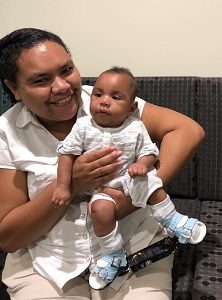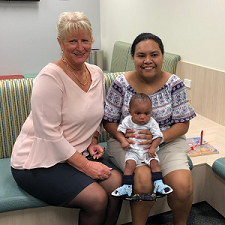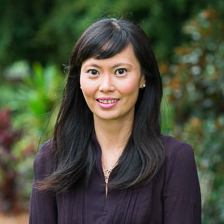 Recently, the Paedicare team crossed path with an adorable young boy, Joseph, and his family who came all the way from Papua New Guinea to Australia for treatment of congenital talipes equinovarus (CTEV), commonly known as clubfoot. The necessary treatment for clubfoot in newborns was not readily available in his hometown. However, with the generosity of Mater Foundation, Joseph was able to receive the gold standard care from a Mater Private paediatric orthopaedic specialist and physiotherapist.
Recently, the Paedicare team crossed path with an adorable young boy, Joseph, and his family who came all the way from Papua New Guinea to Australia for treatment of congenital talipes equinovarus (CTEV), commonly known as clubfoot. The necessary treatment for clubfoot in newborns was not readily available in his hometown. However, with the generosity of Mater Foundation, Joseph was able to receive the gold standard care from a Mater Private paediatric orthopaedic specialist and physiotherapist.
Diagnosis of clubfoot in newborns
As a paediatrician, it is routine to check newborns for clubfoot. When we diagnose clubfoot, we distinguish whether the clubfoot is a structural one or a positional one. Structural clubfoot deformity is when the foot is pointing down, turned in and twisted. The heel would be pointing in or upward. Positional clubfoot is when the foot is pointing down, turned in and twisted, with the heel pointing in or upward. Hold on a second, aren’t those descriptions the same? Absolutely! The point is that it’s easy to misjudge one type to the other if we only glance at the foot quickly and do not examine the foot. So, what’s the difference?
Positional clubfoot in newborns

Positional clubfoot is similar to opening a tightly packed new yoga mat that keeps on rolling on itself. Even though it is annoying at the start, I know that the more I straighten and use that new yoga mat, the less it will roll on itself. In positional clubfoot, the foot is structurally normal but because it was ‘squashed’ into a funny position inside the womb the foot has an abnormal resting position. Similar to the yoga mat, the abnormally positioned foot should be able to be passively corrected. When we rotate the foot around, it would have a full range of movement. We refer newborns with positional clubfoot to our physiotherapist colleague for some stretching exercises. With regular stretching and exercises, the foot position will usually resolve itself within a few weeks of life. If the foot does not correct itself after six weeks of age then we might actually be dealing with a mild case of structural clubfoot.
Check out the Royal Children’s Hospital fact sheet on Positional clubfoot.
Structural clubfoot in newborns
In structural clubfoot, there is an underlying deformity of the bone structure with the addition of muscle tightening or shortening (contractures). Unlike the flimsy new yoga mat, structural clubfoot is like dealing with a bended lead pipe. With passive movement, it would not be easy to rotate and move structural clubfoot into a neutral position. Just like what Joseph had, the gold standard management for structural clubfoot is the Ponseti method which includes serial casting done by a physiotherapist followed by a brace until at least five years of age. After weeks of serial casting, some children might need tendon surgery (tenotomy) as well. This is a picture of Joseph with his shiny boot and bar brace.
Please refer to this fact sheet provided by Queensland Children Health for further information on treatment of clubfeet with the Ponseti method.
Structural clubfoot is the most common paediatric musculoskeletal birth defect (1:1000 birth). The cause is unknown and up to 75 percent of cases have no family history of the condition. Structural clubfoot occurs twice as often in males and can affect both feet in up to 50 percent of cases.
Clubfoot detection
Clubfoot can be detected during antenatal ultrasound; the younger the antenatal age of ultrasound detection the more likely that the clubfoot is going to be structural in nature rather than positional. Whether clubfoot is detected antenatally and postnatally, there will be no difference in the treatment and its anticipated outcome. Should you worry about your baby’s feet, please do not hesitate to seek medical advice.
If you feel you require paediatric advice for your child please contact us.
For more qualified, easy-to-understand specialist paediatric information visit Paedicare’s blog.

